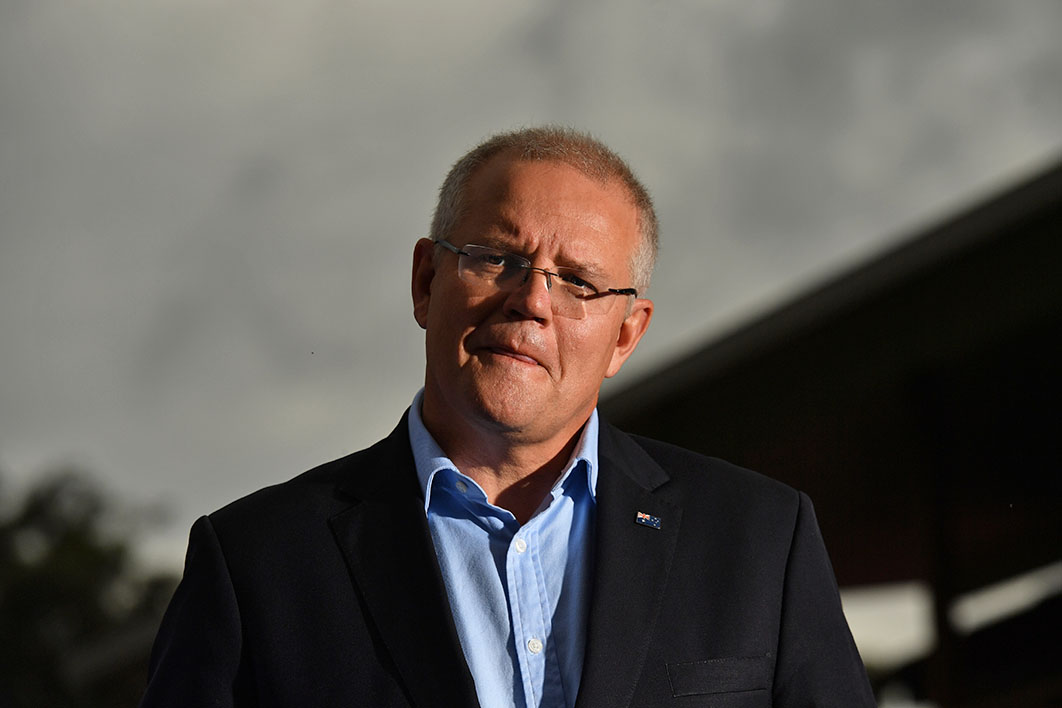Have you noticed $10,000 missing from your savings? Back in 1996, that was the predicted cost to the average family of a government commitment to hold emissions to 1990 levels by 2020. The prediction was made by what was then the Australian Bureau of Agricultural and Resource Economics, or ABARE, using a model developed with funding from the coal industry. On current projections, we will be very close to 1990 levels next year, and yet climate policies have so far had no detectable impact on economic activity or living standards.
Tony Abbott famously described the Labor government’s carbon “tax” (a price, in reality) as a “wrecking ball” through the Australian economy. But neither its introduction under Julia Gillard nor its removal by Abbott had any measurable effect on economic growth. Indeed, the economic outlook presented in the budget statements in those years didn’t mention carbon pricing as a factor in our overall performance.
Why did these apocalyptic predictions go so badly wrong? In the case of the ABARE modelling, it was the result of three main factors: exaggerated assumptions about the cost of reducing emissions, inappropriate choices in the modelling process, and misleading presentation of results.
The problems began with a decision to exclude any consideration of technological progress in energy efficiency or renewable electricity generation. This led to an overestimation of the cost of reducing electricity consumption and replacing coal-fired electricity with renewables. Relative to business-as-usual projections, most of the emissions reductions since then have come from these sources, along with a reduction in land clearing.
The second set of problems related to decisions about how the model’s solution is derived. Depending on how this is done, the costs of a policy can either be understated or overstated, and ABARE consistently chose the latter course. An important example is the question of what will be done with the revenue derived from a carbon tax. A common assumption, used by ABARE, is that the money is either kept by government or handed back to households as a lump sum. In reality, the proceeds of the carbon tax were allocated primarily to reducing income tax, which greatly reduced the economic impact predicted by standard models.
Even with these choices, the ABARE model yielded an estimated cost of less than 1 per cent of GDP, equivalent to a few months’ worth of economic growth. That’s clearly a price well worth paying as part of a global agreement to stabilise the climate. To obscure that problem, ABARE took all of the costs estimated to be incurred over twenty to twenty-five years and used a “present value” calculation to present them as a lump sum. The figure was further exaggerated by using a mythical average family of four, disregarding the fact that, because incomes are unequal, most households get a lot less than the (arithmetic) average.
All of these difficulties were pointed out at the time, by leading economic modellers such as Peter Dixon and Warwick McKibbin, and policy economists, of whom I was one. So why bring up this history now? The director of ABARE at the time was Brian Fisher, the man who has just released alarming estimates of the cost of Labor’s climate policy derived from a new model produced by his BAEconomics consultancy. Far from correcting the errors of the 1996 model, his model repeats them all, and adds new ones.
First, the cost of wholesale electricity is estimated to be as high as $135 per megawatt hour. In reality, contracts for solar PV, with battery storage, are currently being signed at costs of US$30/MWh (about A$40/MWh), and this number is sure to fall. By ignoring this, Fisher produces the absurd suggestion of a carbon price as high as $405 per tonne. That’s nearly twenty times the level that produced significant reductions under the last Labor government and has also produced big reductions in the European Union.
Second, instead of assuming that the state of the economy is determined by the decisions of the Reserve Bank, with the economic impacts of climate policy reflected in wages and prices, Fisher assumes that there will be a permanent increase in unemployment. This greatly exaggerates the economic costs of any policy.
Even so, as in 1996, the estimated effects remain small — around 2 per cent of GDP for the policy simulation closest to Labor’s announced policy. So Fisher then repeats the 1996 trick of adding up impacts over ten years. The end result is the scary cost range of $264 billion to $542 billion trumpeted in the media last week.
Once the obvious errors in the BAEconomics model are corrected, it is clear that the impact of Labor’s policy on aggregate GDP will be well below 1 per cent. That is so small as to be lost in the noise generated by exchange rate change, statistical revisions and the like.
While the average Australian family won’t even notice the cost, and some will benefit from the expansion of employment and business opportunities in renewable energy, it is crucial to support a just transition for workers and communities dependent on fossil fuels. The cost of such support, like that of the transition as a whole, will be very small in relation to the economic capacity of Australia as a whole. •




